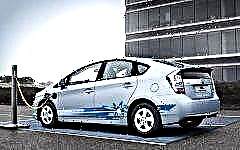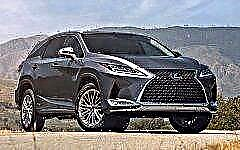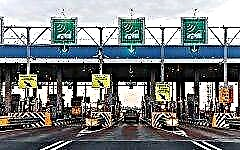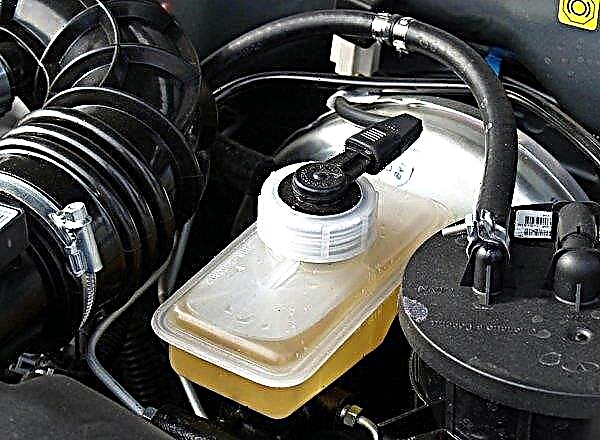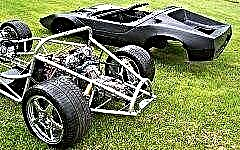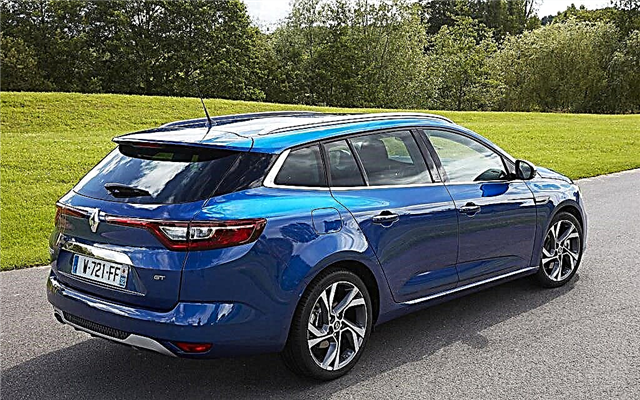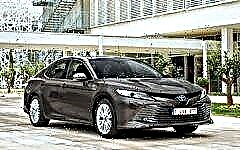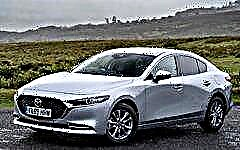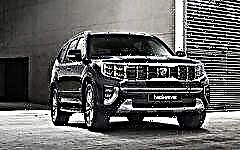

The content of the article:
- Advantages and Disadvantages of Car Travel
- Choosing cities to visit
- Travel documents
- Car rental in Italy
- Features of refueling
- Paid highways and parking
- Traffic rules
Probably, it is difficult to find a person who would not dream at least once in his life to visit sunny, bright Italy, famous for its historical heritage.
In order for such a trip to bring extremely positive emotions, it should be planned in advance. If you are a fan of car tourism, combine the two pleasures by arranging a car trip in Italy: there will be something to remember!
Advantages and Disadvantages of Car Travel
Any tourist with little travel experience will confirm: no sightseeing trip can be compared with the pleasure that tourists get when they get to know Italy by car. There are a lot of advantages in such a trip:
- independent choice of the route, the ability to designate tourist sites for themselves and the time to visit them;
- independence from public transport traffic;
- the opportunity to save on excursion services;
- no need to carry things with you that can safely ride with you in the trunk of a car;
- the opportunity to visit attractions that are located at a distance from the main tourist routes.
Naturally, autotravel has its drawbacks., which are also worth knowing in advance in order to assess how much for you the advantages outweigh (or do not outweigh) the disadvantages:
- the costs of renting a car, travel on toll roads, fuel and parking must be included in the budget in advance so that later there will be no unpleasant surprises;
- it is easy to get lost in the Italian province, especially if your navigator is faulty;
- large Italian cities are distinguished by high traffic density, and ancient cities also have narrow streets, where a certain skill is needed so as not to damage the car while driving;
- free roads in Italy cannot boast of high quality;
- the country's landscape assumes constant driving on hilly terrain and "serpentines", which requires a certain experience and driving skills from the driver.
We deliberately cited the same number of "pluses" and "minuses" in order to emphasize the fact that the choice remains solely with the tourist: whether or not to go by car to Italy - it's up to you, of course, to decide, in accordance with your preferences and views on the above lists the advantages and disadvantages of such a trip.
If the difficulties do not scare you, and the advantages of auto tourism for you do not need extra proof, we proceed to planning the trip.
Choosing cities to visit

Where are we going? The country is large, so it's better to decide on the cities to visit in advance. First of all, it will depend on how much time you have to travel.
If the time is not more than a week, and you want to enjoy Italian resorts and visit more sights, you should not rush to Rome right away. Pay attention to Genoa, Rimini and Naples.
If you have ten days of free time, add Florence and Rome to the list of cities. And if you are lucky enough to get out on a trip for as long as a couple of weeks, do not forget about such gems of Italy as Venice, Milan and Palermo.
Travel documents

The list of documents for a trip to Italy is standard for European countries. You will need:
- international passport;
- open Schengen visa;
- international driving license;
- medical insurance.
If you are driving your own car, the following documents are required for the car:
- a document confirming the registration of a car;
- European car insurance.
It is also worth taking care of the navigator, in which the map of the country will be loaded in advance.
Car rental in Italy

If you decide to rent a car directly in Italy, you can use the specialized offices of car rental companies that are at your service right at the airport. The lease is drawn up quickly.
Another convenient way is to rent a car through the website. By the way, such a rental can be even cheaper than in a non-virtual office, since there are many rental sites, the competition between them is high, and, accordingly, prices are very democratic.
Another important point is booking. If you book a car rental in advance, you will have enough time to slowly choose a car, to clarify the nuances of the rental agreement.
If you rent a car on the spot, do not rely on a wide choice - most likely, you will have to rent a car “upon availability”.
Italy is a tourist country, there are many rental companies here, and not everyone can boast of a positive reputation. In order not to get into an unpleasant situation, it is worth taking care of this issue in advance and choosing a rental company.
There are sites on the Internet for ordering a car rental in Italy, databases of companies with an indication of their reputation are published on them, promotions are regularly held and discounts are provided.
Try one of these sites:
- ecnomynookings.com;
- rentalcars.com;
- autoeurope.ru.
The cost of an economy car in the season is up to 20 euros per day, but out of season prices fall, and you can ride around the country with a breeze even for 6 euros per day. But a class C passenger car will cost more: up to 80 euros per day.
The longer the lease term is, the cheaper one day of lease will cost. In Italy, a rental period of more than one week is already considered long, in this case it makes sense to negotiate a discount. A middle class car costs up to 400 euros per week.
There is an age limit for car rental. As a rule, the company will easily provide the car to drivers aged 21 to 70 years.
If the driver does not fit into this age range and does not have driving experience for more than five years, the rental may require additional commissions and mandatory full insurance, which will cover the company's expenses in case of trouble with the car due to the driver's fault.
As a rule, a deposit is required at almost any rental company. On average, the deposit for a rented car is from 500 to 1000 euros. The deposit is frozen on your credit card and unlocked immediately after returning the car. Sometimes the company can accept collateral and cash.
If you are offered a lease without collateral, this is a reason to think and reread the contract very carefully, it may contain nuances that are unpleasant for the client.
The following documents are required to register a car rental:
- driving license of international format and driving experience from 1 year;
- passport with a valid Schengen visa;
- a credit card to pay for the rental services (if the rental was paid for via the Internet, you will need to present a printout of payment confirmation at the pick-up point).
Please note that in Italy the rented car is traditionally handed over to the renter with a full tank. Accordingly, you must also return the car with a full tank, otherwise you will have to pay extra for gas at an inflated price.
It is not necessary to return the car at the same rental location where you borrowed it. For a separate amount, you can add a clause to the contract, according to which you can leave the car in another city at the agreed office of the company. Also, for a fee, one more driver can be added to the list of persons entitled to drive a rented car.
The mileage of the car is not limited when renting.If this is not specified in the contract, it is worth paying attention to this: some companies charge an additional fee for the "extra" mileage.
Features of refueling

Fuel is not cheap in Italy. In fact, petrol is one of the most expensive in Europe - up to 1.7 euros per liter. Diesel fuel will cost one and a half euros per liter. Therefore, it makes sense to choose a car with a diesel engine.
24-hour gas stations are rare in Italy.
There are two types of filling stations in Italy: with personnel service and automatic. The gas station where the petrol station serves you is closed for the night and for the siesta.
Even on weekends, it will be difficult to find a working gas station with service personnel in remote areas of the country. As a rule, it is better to pay at such a gas station in cash so that there are no problems with the card. Fuel here will cost a little more than what is written on the board. There is no need to give a tip to the tanker - it is already included in the fuel price.
A gas station that says “Self” will be cheaper. At such a refueling station, fuel is paid for in the machine, which accepts bills of 50, 20 and 10 euros. Such machines do not give change. Having placed bills in the machine, you must enter the number of the column on which you will pour fuel.
Paid highways and parking

In the photo: exit from the toll road
There are many toll roads in Italy. All superstrades and highways, as well as tunnels, bridges and ferries are paid.
When calculating your travel budget, take a look at autostrade.it for detailed information on Italian roads and an online calculator for calculating the amount in which the chosen route will fit.
The electronic money collection system Telepass operates here, but it is not suitable for tourists, unless, of course, you have bought an appropriate device for the trip.
At the entrance to the toll road section, a special ticket is taken, and when leaving the toll road, the driver is obliged to present it and pay the accrued amount for travel by credit card or cash.
When leaving the highway, pay attention to the sign at the exit: without a telepass, you need an exit marked with the word “biglietto”.
Where renovations are in progress, the track may be temporarily free. There are a lot of free trails south of Naples. But getting carried away with them in places where there are many toll roads is not worth it in this country: as a rule, their quality leaves much to be desired (although, compared to the roads of Russia, these routes are still quite good).

Like roads, parking in Italy is free and paid. They can be easily distinguished by the color of the markings: free parking is marked in white, and paid parking in blue.
In both parking lots, either a ticket is taken, or "orario" - a parking disc, on which the time when the car entered the parking lot is written, and is placed on the dashboard under the windshield.
The minimum parking bill is charged for one hour. Parking costs - up to 3 euros per hour or up to 25 - per day.
An important point is the availability of free parking near the hotel or other accommodation where you are staying. Therefore, when booking accommodation, do not forget to include the presence of such parking in the selection options, otherwise the accommodation will cost a pretty penny.
When leaving the car in the parking lot, do not forget about the mirrors: it is better to fold them, since the streets in most Italian cities are narrow and passing drivers can easily break them.
Traffic rules

Italy has the following speed limits for light vehicles:
- in settlements - up to 50 km / h;
- between settlements - up to 90 km / h;
- on a highway with blue markings - up to 110 km / h;
- on the autobahn with green markings - up to 130 km / h.
If the speed limit is violated by the driver of the rented car, and this violation gets on the security cameras, most likely, the fine will be automatically debited from the offender's credit card or presented at the time the car is returned.
In general, control over the implementation of traffic rules in Italy is quite tough. Here you cannot go in reverse on the highway, overtake other cars where it is prohibited.
Also, the police strictly monitor that drivers do not talk on the phone in the absence of a wireless headset. There are many rules, and it makes sense to study them carefully before the trip.
An interesting feature of the road policing system in Italy is the fact that fines here vary not only depending on the violation, but also on the time of day when it was committed - at night the fines are higher.
Conclusion
In general, a trip to Italy by car promises a lot of vivid impressions, but at the same time requires tangible costs, careful planning and compliance with a number of rules adopted in this country.
Whether you go to Italy by car is up to you. But if you really love two things - traveling and the road behind the wheel of a car, most likely you will definitely want to combine these two pleasures.

